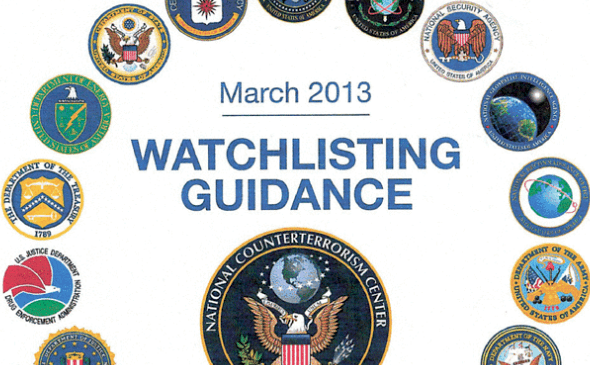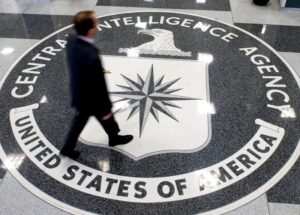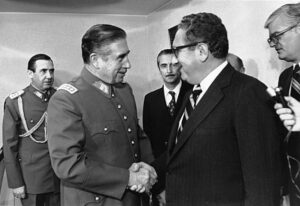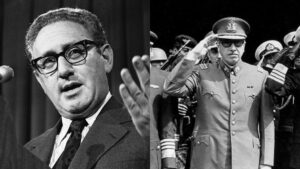U.S. Government Doesn’t Need Evidence to Call You a Terrorist
A key government document obtained by The Intercept confirms that the Obama administration does not require "concrete facts" or "irrefutable evidence" to brand Americans or foreigners as suspected terrorists.
A key government document obtained by The Intercept confirms that the Obama administration does not require “concrete facts” or “irrefutable evidence” to brand Americans or foreigners as suspected terrorists.
Journalists Jeremy Scahill and Ryan Devereaux reported Wednesday:
The “March 2013 Watchlisting Guidance,” a 166-page document issued last year by the National Counterterrorism Center, spells out the government’s secret rules for putting individuals on its main terrorist database, as well as the no fly list and the selectee list, which triggers enhanced screening at airports and border crossings. The new guidelines allow individuals to be designated as representatives of terror organizations without any evidence they are actually connected to such organizations, and it gives a single White House official the unilateral authority to place “entire categories” of people the government is tracking onto the no fly and selectee lists. It broadens the authority of government officials to “nominate” people to the watchlists based on what is vaguely described as “fragmentary information.” It also allows for dead people to be watchlisted.
… The rulebook, which The Intercept is publishing in full, was developed behind closed doors by representatives of the nation’s intelligence, military, and law-enforcement establishment, including the Pentagon, CIA, NSA, and FBI. Emblazoned with the crests of 19 agencies, it offers the most complete and revealing look into the secret history of the government’s terror list policies to date. It reveals a confounding and convoluted system filled with exceptions to its own rules, and it relies on the elastic concept of “reasonable suspicion” as a standard for determining whether someone is a possible threat. Because the government tracks “suspected terrorists” as well as “known terrorists,” individuals can be watchlisted if they are suspected of being a suspected terrorist, or if they are suspected of associating with people who are suspected of terrorism activity.
Hina Shamsi, head of the ACLU’s National Security Project, reviewed the document. She told The Intercept: “Instead of a watchlist limited to actual, known terrorists, the government has built a vast system based on the unproven and flawed premise that it can predict if a person will commit a terrorist act in the future. … On that dangerous theory, the government is secretly blacklisting people as suspected terrorists and giving them the impossible task of proving themselves innocent of a threat they haven’t carried out. … These criteria should never have been kept secret.”
Scahill and Devereaux continued:
The document’s definition of “terrorist” activity includes actions that fall far short of bombing or hijacking. In addition to expected crimes, such as assassination or hostage-taking, the guidelines also define destruction of government property and damaging computers used by financial institutions as activities meriting placement on a list. They also define as terrorism any act that is “dangerous” to property and intended to influence government policy through intimidation.
This combination—a broad definition of what constitutes terrorism and a low threshold for designating someone a terrorist—opens the way to ensnaring innocent people in secret government dragnets. It can also be counterproductive. When resources are devoted to tracking people who are not genuine risks to national security, the actual threats get fewer resources—and might go unnoticed.
Read more here and read the document in full here.
— Posted by Alexander Reed Kelly.
Dig, Root, GrowThis year, we’re all on shaky ground, and the need for independent journalism has never been greater. A new administration is openly attacking free press — and the stakes couldn’t be higher.
Your support is more than a donation. It helps us dig deeper into hidden truths, root out corruption and misinformation, and grow an informed, resilient community.
Independent journalism like Truthdig doesn't just report the news — it helps cultivate a better future.
Your tax-deductible gift powers fearless reporting and uncompromising analysis. Together, we can protect democracy and expose the stories that must be told.
This spring, stand with our journalists.
Dig. Root. Grow. Cultivate a better future.
Donate today.








You need to be a supporter to comment.
There are currently no responses to this article.
Be the first to respond.